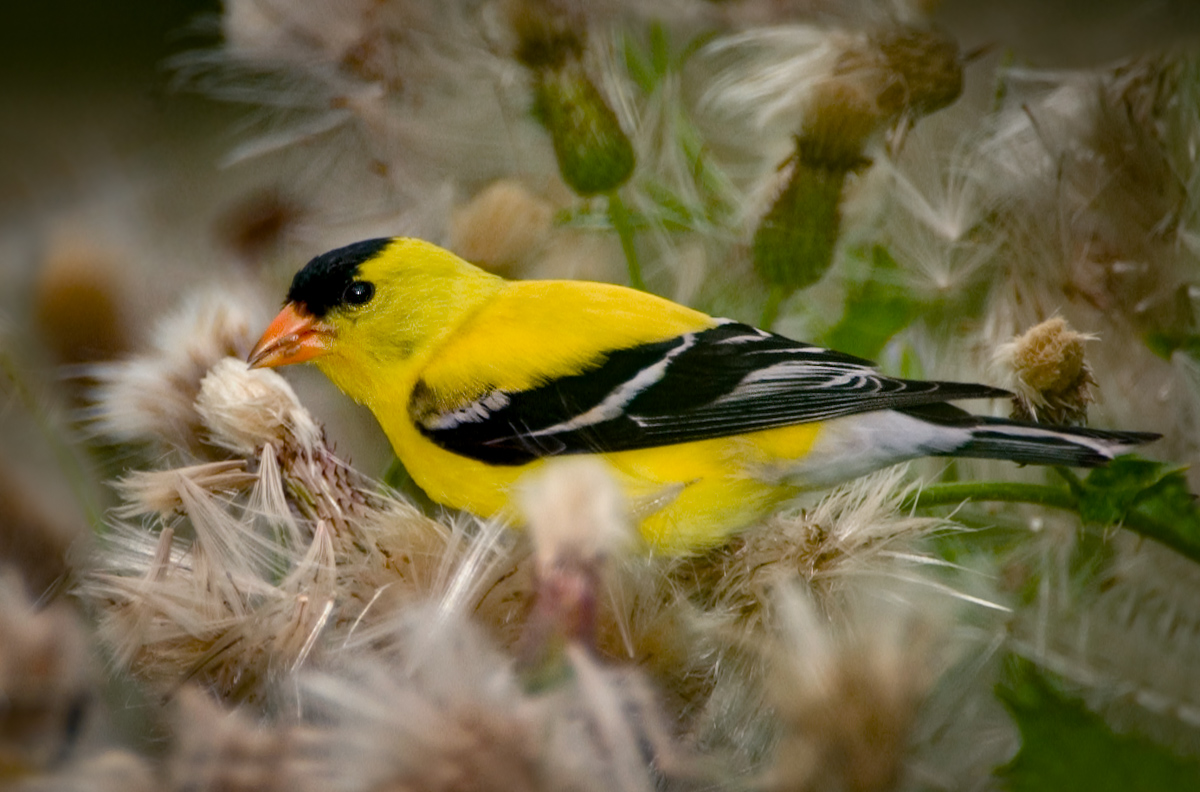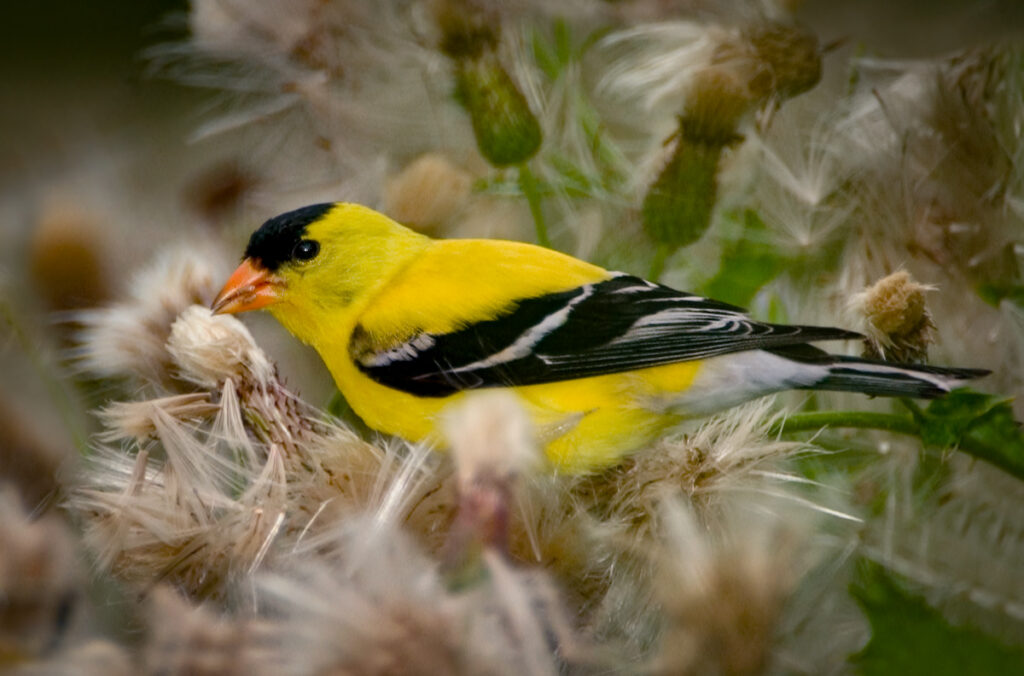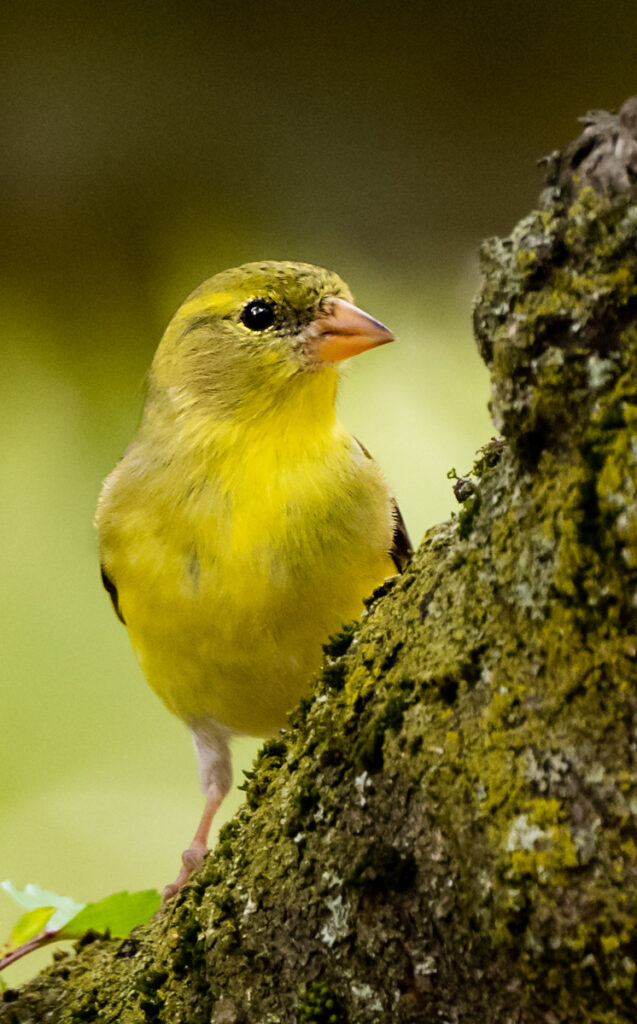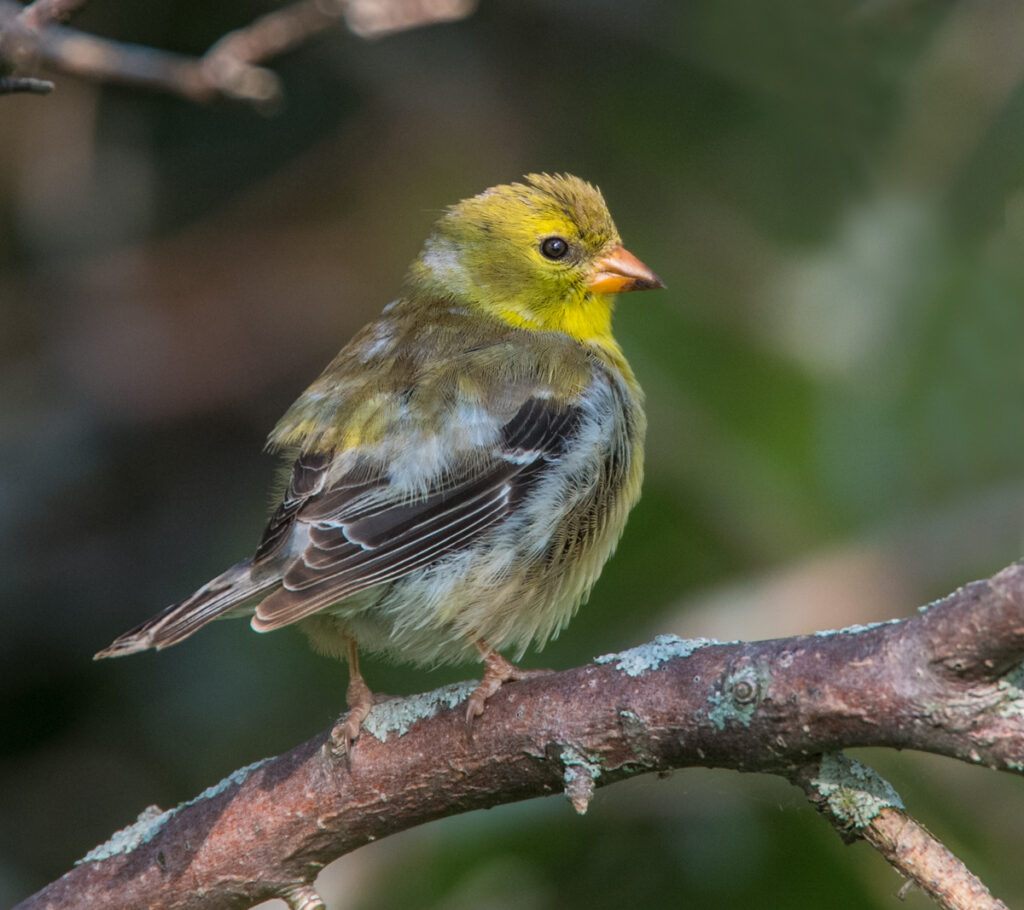
American Goldfinches are colorful, photogenic birds and a favorite of birders and non-birders alike. There are many fun bits of goldfinch trivia that can make these birds even more enjoyable, and the more you know about American Goldfinches as a bird photographer, the better you can capture their unique quirks and interesting personalities.
The American Goldfinch (Spinus tristis), is one of three Goldfinch species found in North America, along with the Lesser Goldfinch and the Lawrence’s Goldfinch, and is the most familiar and widespread of the trio. Despite its name, however, this bird is not quite uniquely American, as this species’ range extends from Mexico to Canada. In different areas, these birds are also called Willow Goldfinches and Eastern Goldfinches based on their habitat and range, salad birds because of their diet, thistle birds because of their preferred nesting material, and Wild Canaries because of their bold yellow plumage.
The idea of “salad birds” is intriguing, as American Goldfinches are one of the few truly vegan bird species. These birds eat only plant material, primarily seeds, and even delay their breeding season until later in the summer when more plants have gone to seed to provide abundant food to nourish their young. Because of this diet, American Goldfinches are often seen in weedy, flowering fields, which can make amazing backgrounds for colorful bird photography. Planting seed-bearing flowers such as asters, coneflowers, cosmos, marigolds, and zinnias can bring these birds right to the yard and create a colorful setting for astonishing photos.
Similarly, “thistle birds” refers to these birds’ choice of plant down – often from thistle flowers – to build their nests. Because they nest so late in the season, many plants and flowers have already faded to fluffy down when Goldfinches are seeking nesting material. As they pluck off fuzz to build their nests, American Goldfinches can be acrobatic danglers, and capturing quirky poses that showcase these birds’ skills can be a treat for any photographer. Even better is focusing on a bit of fluff in a bird’s bill to show its intensity.
American Goldfinches may indeed have bright, canary-yellow plumage, but they aren’t always that color. These birds molt twice each year, once in late winter or early spring and again in early to mid-fall. While female American Goldfinches do not change color noticeably – they are always a more camouflaged olive-yellow – males go from bright, lemony yellow to olive tones between their breeding and non-breeding plumage each fall, and back again in spring. As they molt, males can show patchy, uneven coloration that can be confusing.
No matter what color you manage to capture these birds wearing, how they may be posed, or what name you may call them, American Goldfinches offer plenty of great opportunities for all bird photographers.





